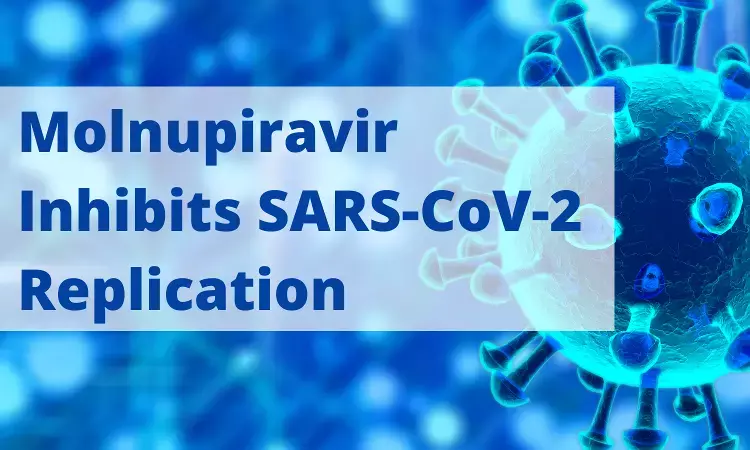- Home
- Medical news & Guidelines
- Anesthesiology
- Cardiology and CTVS
- Critical Care
- Dentistry
- Dermatology
- Diabetes and Endocrinology
- ENT
- Gastroenterology
- Medicine
- Nephrology
- Neurology
- Obstretics-Gynaecology
- Oncology
- Ophthalmology
- Orthopaedics
- Pediatrics-Neonatology
- Psychiatry
- Pulmonology
- Radiology
- Surgery
- Urology
- Laboratory Medicine
- Diet
- Nursing
- Paramedical
- Physiotherapy
- Health news
- Fact Check
- Bone Health Fact Check
- Brain Health Fact Check
- Cancer Related Fact Check
- Child Care Fact Check
- Dental and oral health fact check
- Diabetes and metabolic health fact check
- Diet and Nutrition Fact Check
- Eye and ENT Care Fact Check
- Fitness fact check
- Gut health fact check
- Heart health fact check
- Kidney health fact check
- Medical education fact check
- Men's health fact check
- Respiratory fact check
- Skin and hair care fact check
- Vaccine and Immunization fact check
- Women's health fact check
- AYUSH
- State News
- Andaman and Nicobar Islands
- Andhra Pradesh
- Arunachal Pradesh
- Assam
- Bihar
- Chandigarh
- Chattisgarh
- Dadra and Nagar Haveli
- Daman and Diu
- Delhi
- Goa
- Gujarat
- Haryana
- Himachal Pradesh
- Jammu & Kashmir
- Jharkhand
- Karnataka
- Kerala
- Ladakh
- Lakshadweep
- Madhya Pradesh
- Maharashtra
- Manipur
- Meghalaya
- Mizoram
- Nagaland
- Odisha
- Puducherry
- Punjab
- Rajasthan
- Sikkim
- Tamil Nadu
- Telangana
- Tripura
- Uttar Pradesh
- Uttrakhand
- West Bengal
- Medical Education
- Industry
Molnupiravir (MK-4482/EIDD-2801) inhibits SARS-CoV-2 replication in Syrian Hamster Model

An effective antiviral against SARS-CoV-2 that could be administered orally for use following high-risk exposure would be of substantial benefit in controlling the COVID-19 pandemic. The current study showed that MK-4482 (Molnupiravir) an orally administered nucleoside analog, inhibits SARS-CoV-2 replication in the Syrian hamster model and when administered either starting at 12 h prior to SARS-CoV-2 infection,or even 12 h post-infection, significantly decreases viral lung loads and pathology, but does not affect shedding from the upper respiratory tract. The study also determined a half-maximal inhibitory concentration(IC50) value for EIDD-1931. MK-4482 (known previously as EIDD-2801) is an orally administered bioavailable prodrug (5′-isobutyric ester form) of the cytidine nucleoside analog EIDD-1931 (β-D-N4-hydroxycytidine; NHC).
Study design:
- Hamsters were divided into groups for either pre-infection or post-infection MK-4482 treatment (n = 6 per group). A third group consisted of vehicle control animals that received the same dosing schedule and volume as the pre-infection group.
- Groups were then treated with MK-4482 (250 mg/kg) at 12 h and 2 h prior to infection (pre-infection group) or 12 h following infection (post-infection group).
- Treatment was then maintained with 12 h dosing until the completion of the study 84 h post-infection (day 4).
Results:
In-vitro inhibitory effect of EIDD-1931 on SARS-CoV-2 replication in Calu-3 cells:
- EIDD-1931 treatment resulted in a decrease in SARS-CoV-2 replication by approximately 3-logs (880-fold)when compared to no drug controls.
- The IC50 value for EIDD-1931 was shown to be at sub-micromolar levels in Calu-3 cells at 414.6nM.
- Absence of toxicity - Viability was assessed over differing concentrations, demonstrating only minimal cellular toxicity at the highest drug concentration(EIDD-193140μM).
Efficacy of the MK-4482 prodrug in the Syrian hamster model:
- Virus shedding: Levels of viral RNA in the oral cavity decreased from day 2 to 4but were similar between all groups at these two-time points of analysis (~ 108 and 107, for days 2 and4 post-infection, respectively).
- Lung tissue samples: A 1-log decrease in viral RNA was detected in the lungs of pre-infection and post-infection groups, respectively, when compared to the vehicle control group, which corresponded to a 2-log decrease in infectious virus in the lungs of the MK-4482 treated groups when compared to the vehicle controls.
- Immunoreactivity against SARS-COV-2 antigen: Vehicle controls contained significantly more antigen than treated groups, with vehicle controls having on average 4.71 times more antigen signal than pre-infection treatment animals and 3.68 times more signal than post-infection treatment animals.
- Level of MK-4482 in lungs: All treated animals displayed detectable levels of EIDD-1931 in lung and levels were similar across treatment groups (pre-infection: 18.80 ± 5.97 nmol/g lung, post-infection 17.56 ± 5.49 nmol/g lung).
- RNA copying errors: Viral genomes from MK-4482 treated animals had a significant accumulation of nucleotide substitutions. These results are consistent with the RNA copying errors function of MK-4482 in reducing infectious virus and disease intreated animals
This study supports the potential utility of Molnupiravir to control SARS-CoV-2 infection in humans following high-risk exposure as well as for the treatment of COVID-19 patients.
Take away
• Molnupiravir has an advantage of oral administration.
• Initiation of Molnupiravirwithin 12 h of a productive exposure resulting in infection significantly reduces SARS-CoV-2 replication and associated pathology in the lung target organ.
Reference:
Rosenke K, Hansen F, Schwarz B, Feldmann F, Haddock E, Rosenke R, Barbian K, Meade-White K, Okumura A, Leventhal S, Hawman DW, Ricotta E, Bosio CM, Martens C, Saturday G, Feldmann H, Jarvis MA. Orally delivered MK-4482 inhibits SARS-CoV-2 replication in the Syrian hamster model. Nat Commun. 2021 Apr 16;12(1):2295. doi: 10.1038/s41467-021-22580-8. PMID: 33863887; PMCID: PMC8052374.
Dr Kamal Kant Kohli-MBBS, DTCD- a chest specialist with more than 30 years of practice and a flair for writing clinical articles, Dr Kamal Kant Kohli joined Medical Dialogues as a Chief Editor of Medical News. Besides writing articles, as an editor, he proofreads and verifies all the medical content published on Medical Dialogues including those coming from journals, studies,medical conferences,guidelines etc. Email: drkohli@medicaldialogues.in. Contact no. 011-43720751


